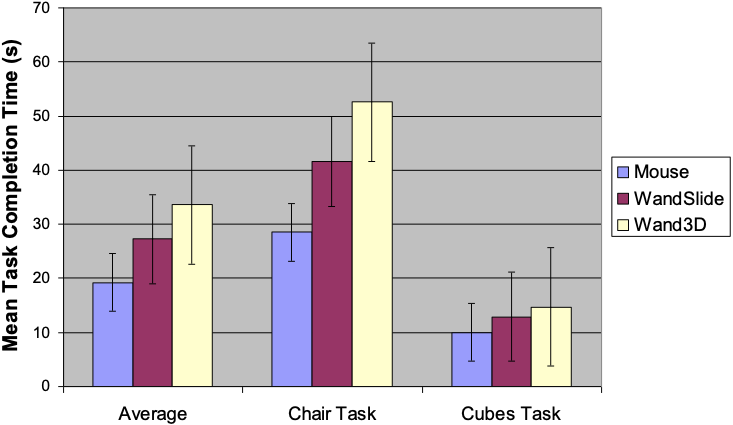
Guidelines for 3D Positioning Techniques Inproceedings
Robert J. Teather, Wolfgang Stuerzlinger
Abstract:
In this paper, we present a set of guidelines for designing 3D positioning techniques. These guidelines are intended for developers of object interaction schemes in 3D games, modeling packages, computer aided design systems, and virtual environments. The guidelines promote intuitive object movement techniques in these types of environments.We then present a study comparing 3D positioning techniques based on these guidelines with 2D and 3D/6D devices across VR display technologies. Display technologies such as stereoscopic graphics and head-coupled perspective provide additional depth cues and could affect how a user perceives and thus interacts with a 3D scene - regardless of the input device/technique used. Thus they are examined as well. The results suggest that 2D devices using "smart" movement algorithms can outperform 3D devices.
